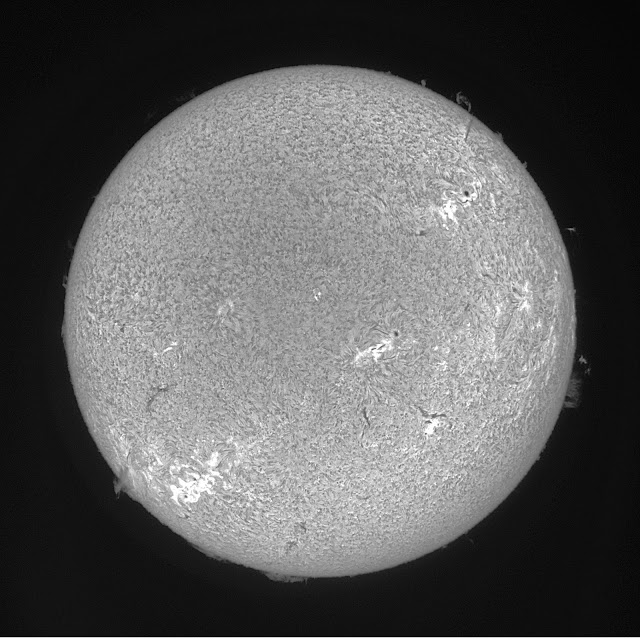Last night, Saturday 14 September, was a NASA-sponsored "International Observe the Moon Night". According to NASA, this is an annual event chosen to occur in the fall on a weekend (i.e., Saturday) near the time of a quarter-Moon. Why a quarter Moon? - because that is when crater detail is most easily visible. The Astronomical League also publicizes two annual "Astronomy Days" (one in Spring, one in Fall) that are timed to the quarter-moon for the same reason. On Saturday the moon age was 11.4 days, about 4 days past quarter phase.
 |
| Celestron C5 + E-M5iii, ISO 320, 1/320 s. |
Here is a close-up of the northern region:
 |
| The dark oval near the center is the crater Plato. |
 |
| Friday, 13 September. C5 + E-M5iii. ISO 320, 1/200 s. |
This image of the double star Albireo was also obtained with the Celestron C5 on Friday night:
 |
| Celestron C5. ISO 400, 2 s. |
Albireo (Beta Cygni) is probably an optical double, i.e., a chance alignment, rather than two gravitationally-bound stars. Regardless, the contrasting colors of the two stars make it a worthwhile sight in small telescopes.
Unlike the moon, features on the sun can change over time-scales ranging from minutes to days. There have been some interesting prominences visible the past few days:
 |
| 13 September. Lunt LS50THa double-stack. |
 |
| 14 September. |
Some close-ups:


No comments:
Post a Comment
Comments are moderated.